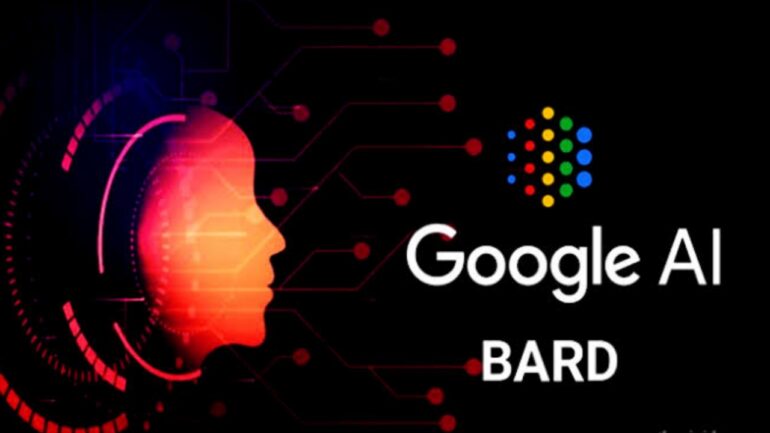TL;DR:
- Google unveils a significant expansion of its Bard AI chatbot, integrating it with a wide range of Google services.
- Bard can now assist users with tasks related to YouTube, Google Drive, Google Flights, and more.
- It offers multilingual support, fact-checking capabilities, and a refined large language model.
- This update represents the most significant enhancement since Bard’s public release.
- Users can link their Gmail, Docs, and Google Drive, improving personal data management.
- A “double check” feature helps users assess response accuracy.
- Bard now supports collaborative conversations and aims to incorporate generative AI into Google’s services.
Main AI News:
Google has unveiled a substantial expansion of its Bard AI chatbot. This latest development comes as part of Google’s ongoing efforts to leverage AI technologies effectively for consumer-facing applications. The company announced a series of comprehensive updates to Bard, positioning it to tap into Google’s extensive suite of tools, including YouTube, Google Drive, Google Flights, and more. This infusion of additional resources empowers Bard to assist users across a broader spectrum of tasks and queries.
Imagine being able to effortlessly plan your upcoming trip by simply asking Bard or having the chatbot provide concise summaries of recent meeting notes stored in your Google Drive documents. These newfound abilities exemplify the synergy between Bard and Google’s ecosystem, ultimately streamlining various aspects of daily life. Notably, this update represents the most substantial enhancement to Bard since its public release six months ago.
Beyond these integrations, Google has also fortified Bard with several other noteworthy features. Users can now communicate with the chatbot in multiple languages, making it even more accessible and user-friendly on a global scale. Additionally, Bard has been equipped with advanced fact-checking capabilities, ensuring the information it provides is reliable and accurate. This commitment to improving the chatbot’s core capabilities reflects Google’s dedication to delivering quality AI-driven experiences.
At the heart of these enhancements lies a comprehensive update to the underlying large language model that powers Bard. By continually refining this AI foundation, Google aims to stay at the forefront of the AI race, competing against industry giants like Microsoft and OpenAI.
Sissie Hsiao, General Manager for Google Assistant and Bard, expressed the significance of these developments, stating, “These services in conjunction with one another are very, very powerful. Bringing all the power of these tools together will save people time—in 20 seconds, in minutes, you can do something that would have taken maybe an hour or more.”
Previously, Bard’s capabilities were primarily centered around tasks such as generating essay drafts or assisting in event planning. These functions were based on Google’s extensive language model. However, with the introduction of these new extensions, Bard will now seamlessly tap into a wealth of information from sources like YouTube, Google Maps, Flights, and Hotels by default.
This expanded access enables users to make more complex requests, such as, “Give me a template for how to write a best man speech and show me YouTube videos for inspiration.” Likewise, Bard can provide trip recommendations, complete with detailed driving directions. Importantly, users retain the flexibility to disable these extensions whenever they choose.
Moreover, users can opt to link their Gmail, Docs, and Google Drive accounts to Bard, allowing the chatbot to assist in managing and analyzing personal information. For example, users can ask Bard to find their most recent lease agreement and check the security deposit amount. Google reassures users that their personal Google Workspace data will not be used to train Bard or for targeted advertising, and users maintain the authority to revoke access to their data at any time.
Google views this as the initial step in a broader endeavor to enable Bard to interface with other apps and services, paving the way for even more helpful and versatile responses. It’s worth noting that this field of AI is in its infancy, and Google remains committed to refining Bard based on user feedback.
In an effort to address a common AI challenge known as “hallucinations,” Bard is introducing a “double check” feature. This function allows users to assess the accuracy of Bard’s responses. When activated, specific segments of Bard’s responses are highlighted to indicate where Google Search results either corroborate or diverge from the chatbot’s information. This feature serves as a valuable tool to mitigate misinformation and enhance user trust.
Furthermore, Bard is introducing a collaborative element, enabling one user to share a conversation with the chatbot with another person. This collaborative approach facilitates the expansion of discussions and knowledge sharing.
While Bard initially launched as an “experiment” in March, it has come a long way since then. Google acknowledges that the tool may occasionally display inaccurate or offensive information, which does not represent Google’s views. However, this latest update underscores Google’s commitment to incorporating generative AI into its suite of services, setting the stage for an exciting future where AI seamlessly integrates into our daily lives.
Conclusion:
Google’s strategic expansion of the Bard AI chatbot signifies a significant step in enhancing user experiences. By seamlessly integrating with various Google services, Bard becomes a versatile tool for users worldwide. The addition of multilingual support, fact-checking, and data management features reinforces Google’s commitment to delivering quality AI-driven solutions. This development showcases Google’s determination to stay competitive in the evolving AI market, where sophisticated AI technologies are becoming increasingly essential for consumer-facing applications.

